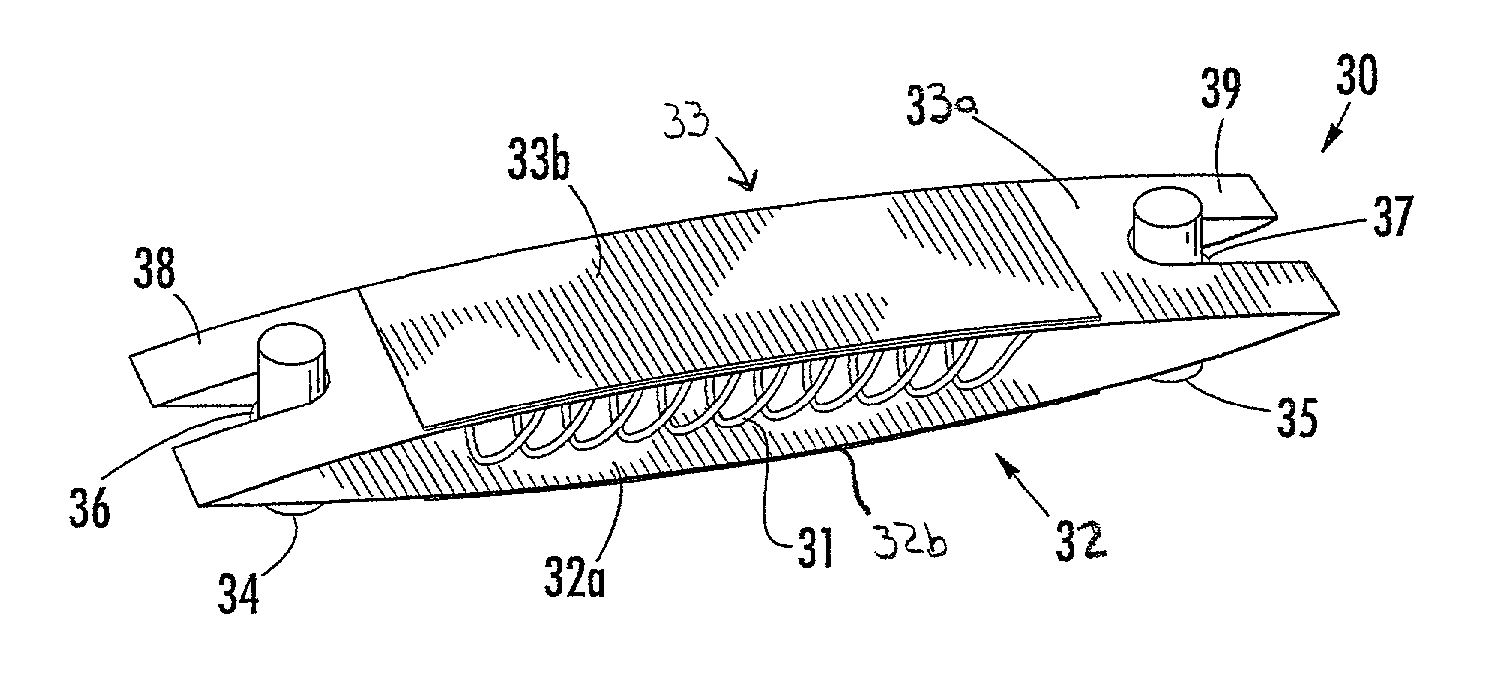Electroactive apparatus and methods
- Summary
- Abstract
- Description
- Claims
- Application Information
AI Technical Summary
Problems solved by technology
Method used
Image
Examples
example 2
[0100] A THUNDER.RTM. actuator similar to that of Example 1 was placed between two posts. A mechanical pre-load was applied to the actuator by mounting an extended spring (FIG. 4, 19) between the two posts upon which the actuator was mounted, similar to that shown by the structure of FIG. 4. The actuator was held in place between the two poles by the force applied to the system from the spring. Different devices were prepared with various pre-loads ranging between about 2 and about 4 Newtons acting on the actuator in its static equilibrium condition. The same voltage as in Example 1 was applied to the modified systems.
[0101] The measured responses can be seen in FIG. 8. The total response varied between about 0.2 and about 2.5 mm depending upon the drive frequency. The addition of the mechanical pre-load to the actuator due to the tensioning device (i.e. spring) increased actuator performance or electromechanical response over that of the prior art device across most of the frequenc...
example 3
[0103] FIG. 9 graphically illustrates the benefits of adding a mechanical pre-load to an electroactive composite structure when the structure has been loaded with an applied mass. The device provides work through movement of the mass in a vertical direction when an electrical voltage is applied across the electroactive structure.
[0104] Similar electroactive devices and voltage conditions were prepared as described in Examples 1 (standard device) and 2 (spring modified device), above. A 100 g mass was placed on the top center of the electroactive device prior to voltage application. A drive voltage of about 200 volts was applied to the devices over a frequency range of from about 0 to about 30 Hz.
[0105] As can be seen in FIG. 9, a maximum displacement of about 0.37 mm was observed for the standard device, while the modified device displayed a displacement of more than about 0.65 mm. The addition of the mechanical pre-load to the electroactive composite structure provided an improved ...
PUM
 Login to View More
Login to View More Abstract
Description
Claims
Application Information
 Login to View More
Login to View More - R&D
- Intellectual Property
- Life Sciences
- Materials
- Tech Scout
- Unparalleled Data Quality
- Higher Quality Content
- 60% Fewer Hallucinations
Browse by: Latest US Patents, China's latest patents, Technical Efficacy Thesaurus, Application Domain, Technology Topic, Popular Technical Reports.
© 2025 PatSnap. All rights reserved.Legal|Privacy policy|Modern Slavery Act Transparency Statement|Sitemap|About US| Contact US: help@patsnap.com



